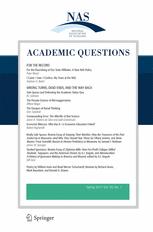The Next 25 Years: Affirmative Action in Higher Education in the United States and South Africa is a peculiar book, in that its real function is not seriously sociological or jurisprudential but polemical. One might suppose, from the title, that this is a balanced set of essays exploring the short- and middle-term future of “affirmative action,” a phrase that appears in the volume hundreds of times. But “affirmative action” is here a euphemism for outright race preference, and every American contributor to this book (American affairs being its real focus) supports preference tenaciously. Balanced this volume is not, and there is an underlying absence of candor. The Next 25 Years is an instrument, chiefly wrought by representatives of the University of Michigan, to combat the current surge of antipathy to preference by race.
A discussion of the relations between the history and future of ethnic preferences in the United States, and the instruments devised to deal with racial problems in South Africa, is not at all fruitful. The conceit is that these two nations are “twins” in being burdened by racial problems. So vastly different are their histories and circumstances, however, that the pairing is entirely inappropriate and certainly not helpful. To discuss this further would appear to give the book a degree of intellectual depth it does not have.
The Next 25 Years manifests a complete absence of disinterested intellectual exploration. It is a carefully designed defense of the continuation of preference—a defense closely linked to the long-held position of the University of Michigan, which has been the institutional champion of race preference in college admissions.1Gratz v. Bollinger and Grutter v. Bollinger, the Supreme Court cases that crystallized the national debate, arose at Michigan, of course.2 The arguments supporting race preference in those cases are here pressed once again, by officers and attorneys and other representatives of the University.
The complete collapse of admissions preferences was staved off by a one-vote margin in the Grutter decision. But the preferential ship is quite evidently sinking. Referenda forbidding race preference in California (Proposition 209), Washington, Michigan, Nebraska, and Arizona have met with overwhelming support; more such popular rejections are coming soon. At the conclusion of her opinion in Grutter in 2003, Justice Sandra Day O’Connor wrote: “We may expect that 25 years from now, the use of racial preferences will no longer be necessary…”3 But the racial proportionality sought by the defenders of preference will surely not have been achieved by 2028. What is to be done? The dike is crumbling. Preferences must be safeguarded—but how? Answer: The arguments successful at the Supreme Court eight years ago must now be dressed in new garments and rehashed.
In this continuing controversy the beleaguered defenders of preference are mainly the Michigan folks, unyielding. Two of the three editors of this volume are from the University of Michigan. One of them, Marvin Krislov, steered the Michigan cases through the courts as general counsel of the university. Now president of Oberlin, Krislov is a substantive contributor at two points, and laments “the harm done by Proposition 209 and its ilk.” The outlook, he observes, “is not bright.”
But the brightness of the prospect depends upon what one hopes for. The second editor, David Featherman, is a professor of sociology at the University of Michigan who makes no bones about the thrust of these essays. “Candidly,” he writes, “the book advocates on behalf of affirmative action.” Mary Sue Coleman, Michigan’s current president, contributes the book’s leading foreword, in which she bemoans the “spreading resistance to affirmative action.” Such resistance, she tells us, “poses a daunting challenge.” A constitutional amendment that now forbids race preference (approved by a near landslide in Michigan in 2006) she describes as a “backlash” that is “disheartening.” But, she adds, “it has also firmed our resolve.” There is no more tenacious defender of race preference than she.
Professor Patricia Gurin, whose studies played a central role in the Michigan brief in Grutter, appears here again of course, anxious to “counter” the arguments of “critics of affirmative action…at the time of the lawsuits.” Michigan’s recent provost, Teresa Sullivan, now president of the University of Virginia, is frank to say (to her great credit) that the “Texas Top Ten Percent Law…merely shifted the terms of the debate [over race preference] from individuals to schools as the basis for exclusion.” The provost at Michigan during the years of struggle, Nancy Cantor, now president of Syracuse University, here defends race preference bluntly: “[T]he most straightforward way of proceeding—by explicitly taking race into account as one factor among others—is the most sensitive and efficient.”
Also contributing to this current set of battlements are the dean of the school of education at Michigan, a lecturer at Michigan’s writing center, and a postdoctoral fellow in education at Michigan.
Justice O’Connor herself reappears, recapitulating her Grutter opinion, joined here by a co-author trained at Michigan Law School and in Michigan’s economics department. Race preference, she warns, can only be “a temporary bandage.” And if the wound has not healed by 2028? Her fellow contributors would certainly leave the bandage in place. Of the twenty essays in this volume dealing with American affairs, thirteen are authored by persons who are now, or who have been, closely associated with the University of Michigan. The book is published by—who else?—the University of Michigan Press.
Not one of the American contributors to this volume is critical of race preference. From their perspective the need for the continuation of preferences in American higher education is inescapable. Their arguments have a remarkably self-reflexive character; they feed each other. In the Grutter decision the Supreme Court majority held that the need for diversity in higher education justified the deliberate use of race preferences in the Michigan Law School. Faculty members and officers of the University of Michigan—authors of essays in this book—had been enlisted to marshal every argument that might contribute to Supreme Court success.
Justice O’Connor had to be won over; hers was the swing vote. To win it they produced a document, published by the University of Michigan, entitled The Compelling Need for Diversity in Higher Education.4 The scientific merits of the claims made in it are dubious; some of the studies relied upon, including those of Prof. Gurin, were later rejected by objective scientific critics. But the Supreme Court majority had swallowed the university’s arguments whole. Justice O’Connor not only adopted the position of the university but also actually borrowed, for use in her opinion, the very words of the Michigan advocates.
Now, eight years later, the folks who sold those arguments to Justice O’Connor, who gave her the very phrases that became central—Marvin Krislov, Patricia Gurin, and others—take satisfaction in The Next 25 Years in quoting “the Court” that found the need for diversity compelling. Wonderful. They are quoting themselves!
A separate essay could and should be written on the entire landscape of Sandra Day O’Connor’s confused and confusing arguments on affirmative action, brimming as they are with inconsistencies. What, for example, was the force of Justice O’Connor’s specification (in the Grutter opinion) of a twenty-five-year period during which great changes are to render race preference no longer needed? She addresses that question in The Next 25 Years. That specified period was, she says repeatedly, an “expectation.” Whose expectation? What force does an “expectation” have when expressed in the conclusion of a majority opinion of the Supreme Court? Was it a deadline? No, a deadline was not in her power to lay down. Was it merely her own hope? She did hope the period would be sufficient, plainly, but the thrust of her opinion surely had much more muscle than an expression of hope. What then?
In 2007, when no longer on the court, Justice O’Connor said with some definitiveness that the Grutter majority “had tried to be careful in stressing that affirmative action should be a temporary bandage rather than a permanent cure.” But in her new essay, she writes of the twenty-five-year expectation that it is “far from binding on any justices who may be responsible for entertaining a challenge to an affirmative-action program in 2028.”
Another inconsistency emerges in her treatment of the “diversity” rationale for affirmative action, first proffered in Justice Powell’s opinion in Bakke in 1978 and formally endorsed in the Grutter decision in 2003. In The Next 25 Years O’Connor in effect admits the relative weakness of the studies she used in the Grutter decision to support the claim of educational benefits accruing to diversity, and she calls for more studies so that, in the twenty years remaining, scientists may firmly establish the benefits of affirmative action. “We hesitate to cite scholarly work to back our speculations in this part,” she and her co-author write diffidently. “Certainly useful studies have already been conducted on the benefits from diverse student bodies, but in our view more needs to be done.”
Terence Pell of the Center for Individual Rights found it “a little startling for the justice who authored the majority opinion to now be so candid that these studies were weak and the court’s opinion was speculative.”5 Nevertheless, O’Connor’s underlying supposition seems to be that race preference, as an instrument for social change, is indeed essential and beneficial, and will achieve the permanent racial balance sought. This supposition she (like every other American contributor to this volume) never seriously doubts.
In fact, social scientists who are not soldiers in a political battle, and who seek the truth of the matter, have produced a mass of data that turn that supposition on its head. Ethnic proportionality is not achieved by preference. Racial hostilities are not healed but are in fact intensified by preference. Ethnic polarization is not reduced but accentuated. Preferences reinforce the racial stereotypes they were put forward to overcome.6 The damaging consequences of race preference become more widely and more fully recognized each passing year.
In his dissent in the Grutter decision Justice Clarence Thomas observed that it makes no sense to hold that what will indeed be unconstitutional in twenty-five years is constitutional now. He was right in this, of course. We may hope that all our courts, now fortified by the overwhelming rejection of race preference by voters, will find such preference to be—as indeed it has always been—an egregious constitutional violation. All citizens, in our country, without regard to their color or national origin, are entitled to receive the equal protection of the laws. That, after all, is what we stand for. This we may proclaim as our expectation: that genuine racial equality will be reaffirmed long before the expiration of the next twenty-five years.
1 Full disclosure: As a member of the Michigan faculty, I have been sharply critical of the race preferences we have given. In 2006, a Michigan constitutional amendment forbidding race preference in state universities (and also in public contracting and public employment) was adopted by overwhelming vote. I was an outspoken advocate of that amendment. On our campus the argument has been unrelenting and intense—but also always courteous and thoughtful.
2 Gratz v. Bollinger, 539 U.S. 244 (2003). Grutter v. Bollinger, 539 U.S. 244 (2003).
3 The text of Justice O’Connor’s opinion, given June 23, 2003, can be found at
4 The text is available at
5 Peter Schmidt “Sandra Day O’Connor Revisits and Revives Affirmative-Action Controversy,” Chronicle of Higher Education, January 14, 2010,
6 For a review of the overwhelming evidence that race preference is damaging to all concerned, and especially damaging to universities and to the minorities preferred, see part 3 of Carl Cohen and James Sterba, Affirmative Action and Racial Preference: A Debate (Oxford: Oxford University Press, 2003).














